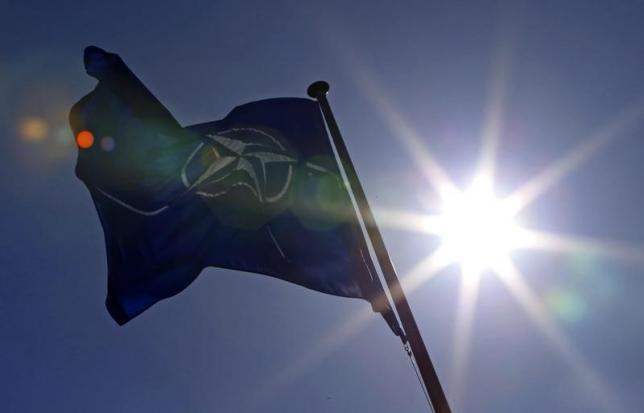NATO and its allies opened their largest military exercise in more than a decade on Monday, choosing the central Mediterranean to showcase strengths that face threats from Russia's growing military presence from the Baltics to Syria.
As planes flew over a gala ceremony for NATO's military and political leaders at an air base in southern Italy, Russia's resurgence was the central topic of concern, pushing NATO to embark on its biggest modernization since the Cold War.
"This sends a very clear message to any potential aggressor," NATO's top commander General Philip Breedlove said of the Trident Juncture exercises and the testing of a new rapid-reaction force.
"Any attempt to violate the sovereignty of one NATO nation will result in the decisive military engagement of all NATO nations," Breedlove said, before donning flight gear to oversee a fly-over of dozens of fighter jets and camouflaged helicopters.
But looming over the exercises involving some 36,000 troops, ships and aircraft over five weeks is the issue of how far Russia's growing military presence from the Baltics to Syria can limit NATO's ability to move around by sea and air.
From the Baltics, where Russia has a naval base in Kaliningrad, through the Black Sea and annexed Crimea, to Moscow's intervention in Syria, Russia has stationed anti-aircraft and anti-ship missiles able to cover huge areas.
"We are very concerned about the Russian military build-up," NATO's Deputy Secretary General Alexander Vershbow told reporters. "The increasing concentration of forces in Kaliningrad, the Black Sea and now in the eastern Mediterranean does pose some additional challenges," he said.
NATO officials insist the alliance is ready and able to defend any of its 28 allies from any threat, while its combined strength is far greater than Russia's military capacity.
FREEDOM OF NAVIGATION
Still, privately NATO officials and diplomats worry the alliance needs to be more agile to combat multiple threats beyond its borders, a fact underscored by Libya's collapse, the rise of Islamic State militants and Syria's civil war.
They see the emergence of a Russian strategy to set up defensive zones of influence, so-called anti-access area denial, with surface-to-air missile batteries and anti-ship missiles that can prevent forces from entering or moving across air, land and sea.
That could prevent NATO countries including the United States setting up a no-fly zone to protect Syrian refugees from bombings in northern Syria, for instance.
"We have to take into account that Russia is going to have a much more substantial presence ... with the ability to impede our freedom of maneuver and our freedom of navigation," said a senior official who declined to be identified.
The Crimean peninsula, which Russia annexed from Ukraine in 2014, had become "an armed fortress", the official said.
After more than a decade of NATO-led combat operations in Afghanistan, the U.S.-led military alliance is shifting to defend its territory. Control of its outer regions is seen as critical.
One powerful new tool that the exercises will test is a 5,000-strong "spearhead" force comprising air, maritime and special operations components as part of a 40,000-strong rapid reaction force.
Libya's collapse, the rise of Islamic State militants, Syria's civil war and the European Union's failure to stabilize its southern neighborhood are now NATO's problems too and NATO member Turkey shares borders with Syria and Iraq.
While planned two years ago, the exercises are timely because they are not about reacting to an attack on a NATO ally, although NATO remains focused on collective defense.
In the fictitious training scenario, a U.N. Security Council resolution authorizes a NATO mission to help protect a threatened state and to safeguard the seas.
Like us on Facebook or follow us on Twitter to get the latest news about Vietnam
























































